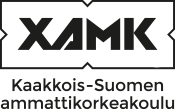Presentation techniques (5 cr)
Code: MU00CT96-3005
General information
Enrollment
15.08.2019 - 30.08.2019
Timing
21.10.2019 - 20.12.2019
Number of ECTS credits allocated
5 op
Virtual portion
2 op
Mode of delivery
60 % Contact teaching, 40 % Distance learning
Campus
Kouvola Campus
Teaching languages
- Finnish
Seats
15 - 25
Degree programmes
- Degree Programme in Interior Architecture and Furniture Design
Teachers
- Sami Helin
Teacher in charge
Heli Abdel-Rahman
Groups
-
SKKV19SPSisustusarkkitehtuuri ja kalustesuunnittelu, päivätoteutus
Objective
You know the basics of the axonometric and descriptive geometry and the drawing of one vanishing point from three different projections of the perspective picture.
You can draw a circle, ellipse and free curves in perspective by free hand.
You master proportions in the perspective picture.
You can use line thickness as an effect.
You can use presentation technical methods to create credible presentation pictures by free hand.
You can combine pictures and text in a presentation poster.
You know the basics of how to use shades and shadings in perspective picture.
You can draw and stylize a person (a woman, man, child) anatomically right.
You know how to present outfits and materials over a human model in different positions and how to realistically execute the materials of surfaces, forms and spaces.
You master the use of colour pencils, felt-tip pens and dry pastels.
Content
How to implement the European first angle projection?
How to mark the dimensioning in accordance with the standards?
How to draw a perspective picture?
How to visualise an idea by drawing?
How to create coloured inner and/or outer views?
How to present a small object as an axonometric presentation picture and as projections?
How to create a presentation poster?
How to present coloured presentation pictures of clothing on a person or different materials and surface forms with different tools?
Location and time
If you have earlier know-how which is related to the subject, you can either totally or partly transfer the credits of the study module on similar work experience or on studies (recognition of prior learning if there is no certificate). In the partial transfer of the credits, you study independently those sectors, which have not been transferred.
Contact the teacher
Teaching methods
Scheduled track:
Teaching organized according to timetable, in addition to working order share of the independent work as agreed.
Independent track:
The learning process that has been integrated into the work will be possible if in your assignments you can develop the know-how that has been mentioned in the objectives and contents of the study module. Contact the teacher of the study module before the beginning of the study module in good time to determine it
• is the learning process that has been integrated into the work possible in your own assignment
• what kind evidence you are able to give from your know-how
• witch parts of the study module you have to participate in teaching
Blended track:
If you have earlier know-how which is related to the subject, you can either totally or partly transfer the credits of the study module on similar work experience or on studies (recognition of prior learning if there is no certificate). In the partial transfer of the credits, you study independently those sectors, which have not been transferred.
Contact the teacher
Completion alternatives
The learning process that has been integrated into the work will be possible if in your assignments you can develop the know-how that has been mentioned in the objectives and contents of the study module. Contact the teacher of the study module before the beginning of the study module in good time to determine it
• is the learning process that has been integrated into the work possible in your own assignment
• what kind evidence you are able to give from your know-how
• witch parts of the study module you have to participate in teaching
Evaluation scale
1-5
Assessment methods and criteria
Student's self-reflection and peer evaluation
Teachers evaluation and cooperation company's evaluation
Active participation and approved assignments
20% use professional vocabulary systematically and look for information in the key information sources of the field
20% identify interrelated tasks
40% use the key models, methods, software and techniques of the professional field
20% work as team members in a goal-oriented way
Excellent (5), Good (4-3), Satisfactory (2-1) Fail (0)
